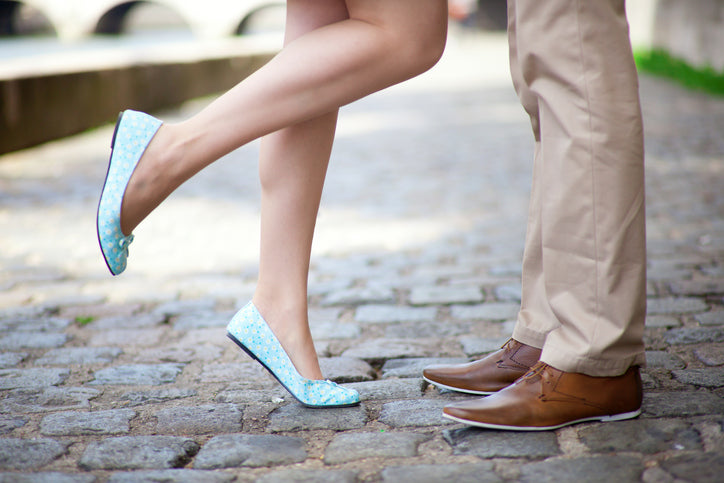High heels have been a staple of women's fashion for centuries, but the question of why they were invented in the first place is not a simple one to answer. There are a number of theories and possibilities, but the true reason for the development of women heels is likely a combination of several factors.
Theory 1
One theory is that women heels were first worn for practicality. During the medieval period, women were expected to participate in various outdoor activities such as horseback riding, hunting, and working on farms. Wearing heels would have provided them with better balance and stability while doing these activities. Additionally, the heel of the shoe was designed to keep the foot in the stirrup while horseback riding, providing a safer and more comfortable ride.
Theory 2
Another theory is that women heels were first worn for aesthetics. During the Renaissance period, shoes with heels were worn by both men and women. However, during this time, heels were not as high as they are today, and they were worn more for fashion than for practicality. High heels were seen as a symbol of wealth and status, and were worn by aristocrats to show off their wealth and status.

Theory 3
A third theory is that women heels were first worn for sexual attraction. Throughout history, heels have been associated with femininity and sexuality. High heels can make a woman's legs appear longer and more toned, and they can also change the way a woman walks, making her gait more provocative. This theory suggests that heels were invented to enhance a woman's sexual appeal and to attract the opposite sex.
Theory 4
A fourth theory is that women heels were first worn to elongate the leg. High heels make the legs appear longer and slimmer, which is considered a desirable aesthetic. This theory suggests that heels were invented to create the illusion of longer legs, making the wearer appear more elegant and taller.
Impact
Despite the various theories, it is clear that the invention of women heels had a significant impact on the fashion industry. High heels have been worn by women for centuries, and they continue to be a popular choice of footwear today. They have evolved over time and have come in different heel heights and styles, from the low kitten heels of the 1920s to the stilettos of the 1950s and the platform heels of the 1970s. Today, there are countless options available for women, from classic pumps to trendy block heels.

The invention of women heels has also had an impact on society. High heels have been used as a symbol of power and status, and have been worn by women in various professional settings to assert their authority. They have also been used as a tool for sexual attraction and have been portrayed as a symbol of femininity and sex appeal in popular culture.
Criticism
However, the invention of women heels has also been met with criticism. Many argue that high heels are uncomfortable and can cause pain and injury to the feet and legs. They have also been criticized for promoting an unrealistic and unhealthy standard of beauty. In recent years, there has been a growing movement towards more comfortable and practical footwear options for women.
Despite these criticisms, women heels continue to be popular and have a place in the fashion industry. With the right fit and proper care, women heels can be worn comfortably, and can be a stylish and fashionable option for many women. The history of women heels is complex and multifaceted, with practical, social, aesthetic, and cultural factors all playing a role in their invention.

Conclusion
In conclusion, the invention of women heels is a complex and multifaceted topic with various theories and possibilities. From practicality to aesthetics, sexual attraction to elongation of legs, women heels have been worn by women for centuries and continue to be a popular choice of footwear today. The invention of women heels has had a significant impact on the fashion industry and society, but also met with criticism regarding comfort and promoting unrealistic standards of beauty. Regardless, women heels are here to stay, and with the right fit and proper care, women can continue to enjoy wearing them in style.



